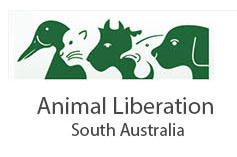JUMPS RACING KILLS
There is currently a Select Committee South Australian Parliament considering a ban on Jumps Racing. The Committee will be accepting submissions on Jumps Racing until January 31st 2016. Please follow this link to submit yours/view others. The Committee will make their recommendation on June 30 2016.
https://www.parliament.sa.gov.au/Committees/Pages/Committees.aspx?CTId=3&CId=328
Please see our list of facts on Jumps Racing Below. You do not have to include all points, please pick what speaks to you or is relevant to you.
* Since 2009, at least sixteen horses involved in jumps racing in South Australia have died, with the most recent death of Trenchtown at Morphettville in July 2015.
* Some jumps horses break down during trials, these numbers are not included in the official tally of deaths in jumps races.
* A Melbourne university study published in 2006 showed that a jumps horse was 19 times more likely to die than one competing in a flats race.
* A national Senate Select committee recommended that all States cease jumps racing by 1994. – “Based on evidence received during the inquiry, the Committee has serious concerns about the welfare of horses participating in jump races. These concerns are based on the significant probability of a horse suffering serious injury or even death as a result of participating in these events and, in particular, steeplechasing. This concern is exacerbated by evidence suggesting that, even with improvements to the height and placing of jumps, training and education the fatality rate would remain constant. The Committee, therefore, can only conclude that there is an inherent conflict between these activities and animal welfare. Accordingly, the Committee is of the view that relevant State Governments should phase out jump racing over the next three years”
* Despite modifications to jumps and efforts to make racing safer, horses have continued to die.
* Only two States in Australia continue to allow jumps racing with NSW banning it in 1997 under animal welfare grounds.
* SA is the only state left with a remount rule, meaning a jockey can get back on his horse after a stumble.
* Jumps racing is not a significant industry in SA, so a ban would not cause widespread hardship.
* No SA trainers or stables solely rely on jumps
* South Australia is one of two places in the entire country where others can take their profits home from SA’s legalised cruelty.
* Oakbank attendance is down & major sponsors are pulling out, most recently Yalumba Wines.
* The South Australian Jockey Club no longer want jumps racing at the Morphettville course due to revenue loss.
* It is the number one issue across the racing ministers desk with a majority of the general public in favour of a ban.
* Jumps racing does not save horses from the knackery, it only delays the trip to the knackery while at the same time prolonging the suffering for the horse who is forced to jump hurdles and steeples at speed, risking life and limb
* One quarter of jumps horses only race once
* Average age of a jumps horse is 6.4 years – average lifespan of a horse is 25-30 years.
* Catastrophic limb injuries Found to be 19 times more likely in jump races (resulting in death)
* Cranial (head) or vertebral (back and neck) injury Found to be 121 times more likely in jump races
* Sudden death Found to be 3.5 times more likely in jump races.
* It is common for horses to be brought down by other horses that are falling and for horses to fall or stumble and lose their rider
* The assumption that horses ‘love’ to jump has no scientific basis. Equine behaviourists will confirm that horses jump because they have been trained to do so
*The Coalition for the Protection of Race Horses (CPR), in 2012, revealed that of the 18,000 horses were born in Australia each year, about 12,000 are discarded before ever see a race track.
*These young race horses are victims of the racing industry, as they are considered to be lacking in potential. As they are young, they are candidates for human consumption or pet food. They are often collected directly from stables or trainers by “kill buyers.” These horses along with older jumps horses are considered as “wastage” by the cruel industry, and as many as 80% of these animals show signs of neglect, according to the RSPCA’s 2008 report.
*Jumps horses are raced in long, exhausting contests of up to 5.5 kms and have to jump as many as 33 hurdles, at speed. Horses often stumble and fall, sustaining shocking injuries, and have to be killed on the track.
